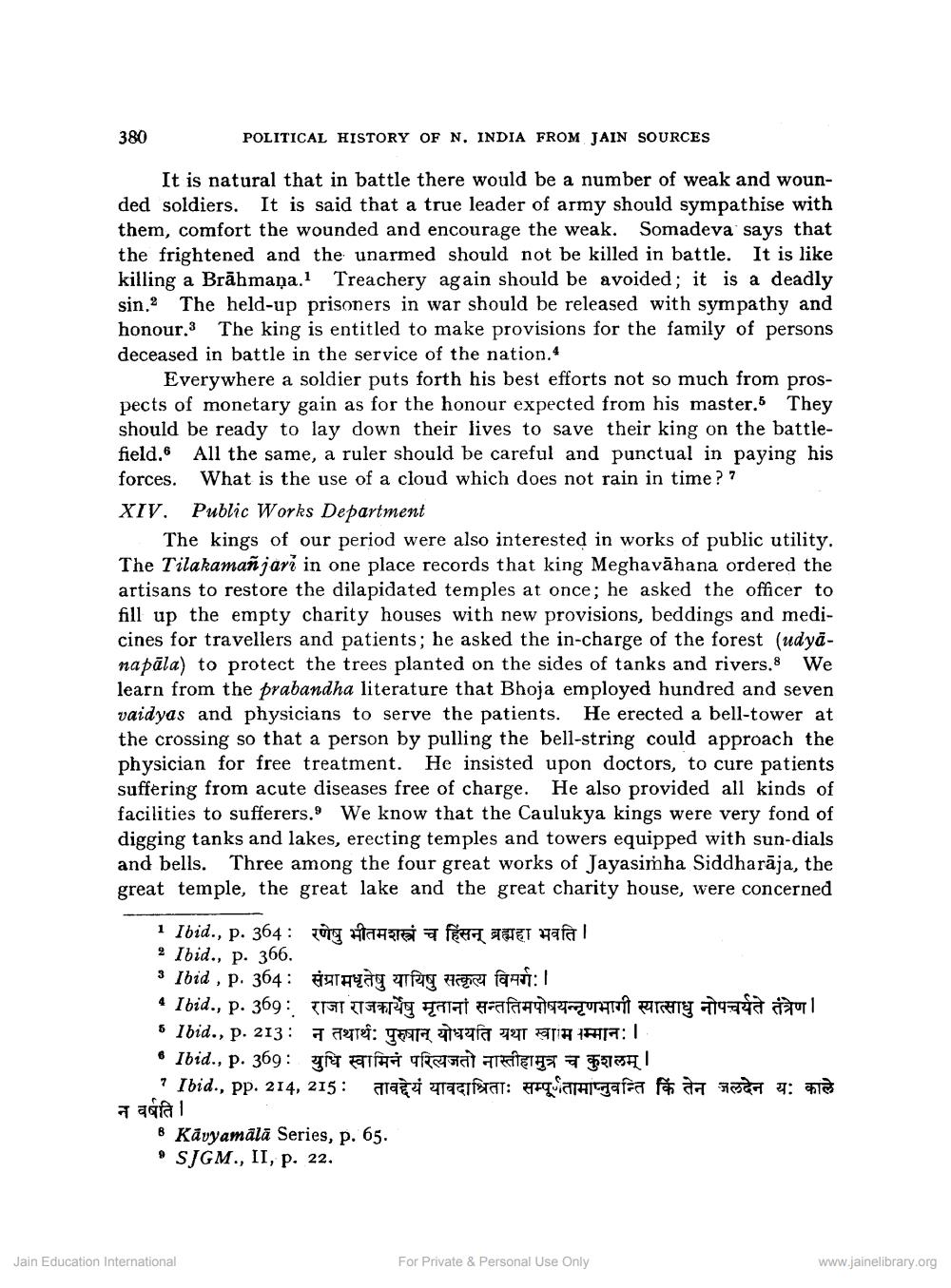________________
380
POLITICAL HISTORY OF N. INDIA FROM JAIN SOURCES
It is natural that in battle there would be a number of weak and wounded soldiers. It is said that a true leader of army should sympathise with them, comfort the wounded and encourage the weak. Somadeva says that the frightened and the unarmed should not be killed in battle. It is like killing a Brāhmaṇa. Treachery again should be avoided; it is a deadly sin.2 The held-up prisoners in war should be released with sympathy and honour.3 The king is entitled to make provisions for the family of persons deceased in battle in the service of the nation."
Everywhere a soldier puts forth his best efforts not so much from prospects of monetary gain as for the honour expected from his master. They should be ready to lay down their lives to save their king on the battlefield. All the same, a ruler should be careful and punctual in paying his forces. What is the use of a cloud which does not rain in time?? XIV. Public Works Department
The kings of our period were also interested in works of public utility. The Tilakamañjari in one place records that king Meghavāhana ordered the artisans to restore the dilapidated temples at once; he asked the officer to fill up the empty charity houses with new provisions, beddings and medicines for travellers and patients; he asked the in-charge of the forest (udyanapāla) to protect the trees planted on the sides of tanks and rivers.8 We learn from the prabandha literature that Bhoja employed hundred and seven vaidyas and physicians to serve the patients. He erected a bell-tower at the crossing so that a person by pulling the bell-string could approach the physician for free treatment. He insisted upon doctors, to cure patients suffering from acute diseases free of charge. He also provided all kinds of facilities to sufferers.9 We know that the Caulukya kings were very fond of digging tanks and lakes, erecting temples and towers equipped with sun-dials and bells. Three among the four great works of Jayasimha Siddharāja, the great temple, the great lake and the great charity house, were concerned
1 Ibid., p. 364: Jug vitae rei f
Hafal 2 Ibid., p. 366. 3 Ibid , p. 364: Hatayag ng Heighed af: 1 4 Ibid., p. 369: TTT T RO ATTi Falchul92UTENTI RIIETE 1974 1 • Ibid., p. 213: 77277ef: gairt naga 741 TA FA: • Ibid., p. 369: UT FIT TART FT KITETU 1971
? Ibid., pp. 214, 215: Jači TaifaT: AFqaralara da Fe 9: 1 agai
& Kavyamálā Series, p. 65. » SJGM., II, p. 22.
Jain Education International
For Private & Personal Use Only
www.jainelibrary.org




